Subscribe to the Newsletter
Your cart is empty
Shop now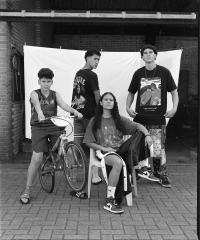

Greif Alumni: Q&A with Farren van Wyk
Farren van Wyk interrogates migration, ethnicity, colonialism and apartheid
We periodically invite our alumni, artists we have featured in the past, to share their new work and projects with us. Farren van Wyk was part of Darius Himes & Ali Rajabi’s Guest Room “The Oneness in Humanity” in 2022. She participated with an image from her series "Die lewe is nie reg vir my nie,” her first project exploring the history of gang culture within the racially classified Coloured community of Schauderville and an attempt to decolonize the way people of colour, like herself, are portrayed and seen.
Van Wyk showed her most recent project, “Mixedness is my Mythology,” at Jaou Biennial in Tunis and had a site-specific installation at the Camissa Museum in Cape Town as part of a transnational, collaborative project of The Black Archives, Nancy Jouwe and Elise Fernandez on behalf of the Camissa Museum, explores the legacy of Dutch slavery in the Cape.
Ilaria Sponda: In your most recent project, "Mixedness is my Mythology," you tell a story of uprooting and rooting related to your familial and personal history. What approach did you apply to storytelling?
Farren van Wyk: “Mixedness is my Mythology” is a long-term project that I started in March 2020, when I returned to the Netherlands after six months spent in South Africa. As it was the pandemic times, I spent my days with my brothers and we were immersed in South African and Afro-American culture, from music, to movies, the NBA. I was inspired to capture them, styling their looks through hair and clothing. Photographing them opened a door to explore the legacy and historical connections between South Africa and the Dutch. Our farm naturally became the backdrop, blending personal narratives with a deeper reflection on cultural ties and shared histories.
IS: Reflecting on your first project, "Die lewe is nie reg vir my nie," it seems that the urgency to narrate the uprooted conditions of others eventually led you to explore these themes within your own family and history, as you began doing in 2020 with your brothers. Could you elaborate on this shift?
FVW: Yes, it took me a while to see this, to be able to reflect upon it. While portraying my brothers, photography became a tool for healing as I was going through mental health issues. I needed to relearn everything for myself and observing my brothers served as a source of inspiration and a door to reconnect with myself and my heritage. Through my studies in Cultural and Visual Anthropology, particularly in exploring what it means to be classified as “of colour”, I could counter fixed notions of identity in my work.
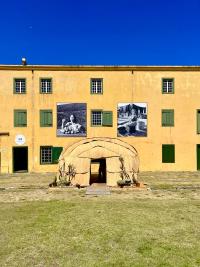
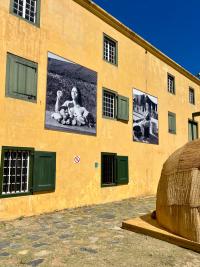
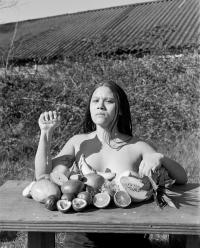
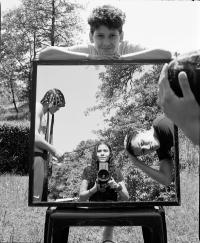
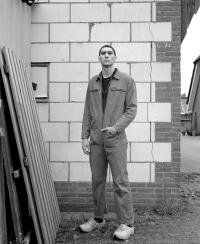
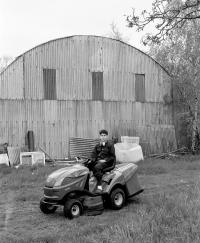
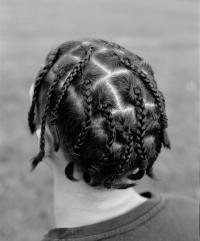
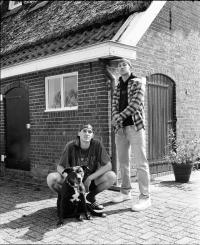
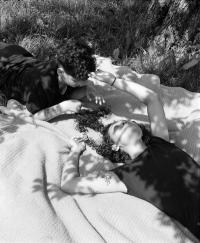
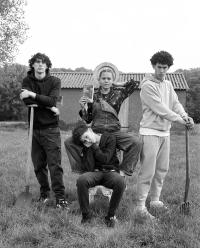

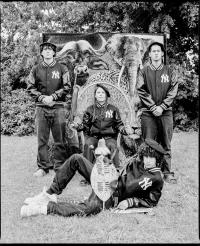












IS: You've recently created an outdoor, large-scale installation at the Camissa Museum in Cape Town, supported by The Black Archives and Nancy Jouwe. How do you feel about presenting your work in a public space?
FVW: It was my first exhibition in my homeland, and I must say it was a deeply personal experience. Showing work in Cape Town brought new challenges and so much growth. This was definitely my largest work to date, which brought together one image from “Mixedness in my Mythology” and a set of new ones, created over the past summer between South Africa and the Netherlands. When I showed work in the Netherlands in 2023 with The Black Archives, my aim was always educational, as South African history was completely absent from the academic curriculum I was taught. I’ve often felt that our stories were left out. That’s why it felt compelling to create in South Africa a space for conversations as well, though I felt like an outsider – raised and educated in Northern Europe. This tension led me inward. I turned to self-portraiture, pushing my boundaries to celebrate my homecoming and pay homage to the women I grew up with, the women on apartheid posters, and those I saw in the streets. I chose to embody and transform myself rather than place others in such a vulnerable position. This was my way of connecting and honoring them while grappling with my own identity.
IS: Is your work in any way related to archives? If so, how do you incorporate them into your research and practice?
FVW: I work with archives, creating images as reactions to historical materials, often serving as a starting point for my research. I aim to engage deeply with these visual materials, channeling my emotional responses into my creative process. By seeing mainly black and white people in the archives I began questioning: When do people who are mixed enter the narrative? Where are we in these posters? Through my work, I position myself in these narratives, creating my own archive. My main sources include South African history Archive (SAHA) and The Black Archives, alongside personal photo albums from my relatives, anthropological resources, magazines, books, studies, and drawings. These diverse materials inform and shape my artistic practice.
IS: What are you now working towards?
FVW: Reflecting on my roots has led me to move increasingly inward. From exploring community narratives to familial connections, I’ve gradually shifted toward self-portraiture, focusing more closely on my own identity. The pandemic naturally pushed me in this direction, encouraging deeper self-reflection. Currently, I’m researching indigenous South African flowers and plants that evoke memories of my childhood. There’s a strong sense of melancholy in this future work, as I explore the symbolism tied to these botanical elements. My self-portraits now intersect with this botanical research, creating juxtapositions that are both personal and evocative. Objects have also begun to take on a more significant role in my sets, enriching the narratives I construct.